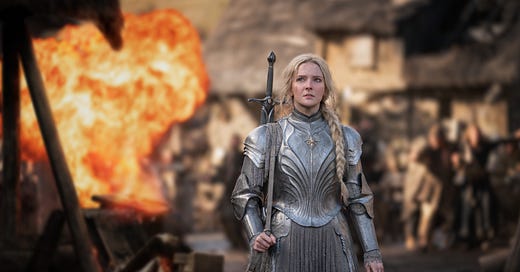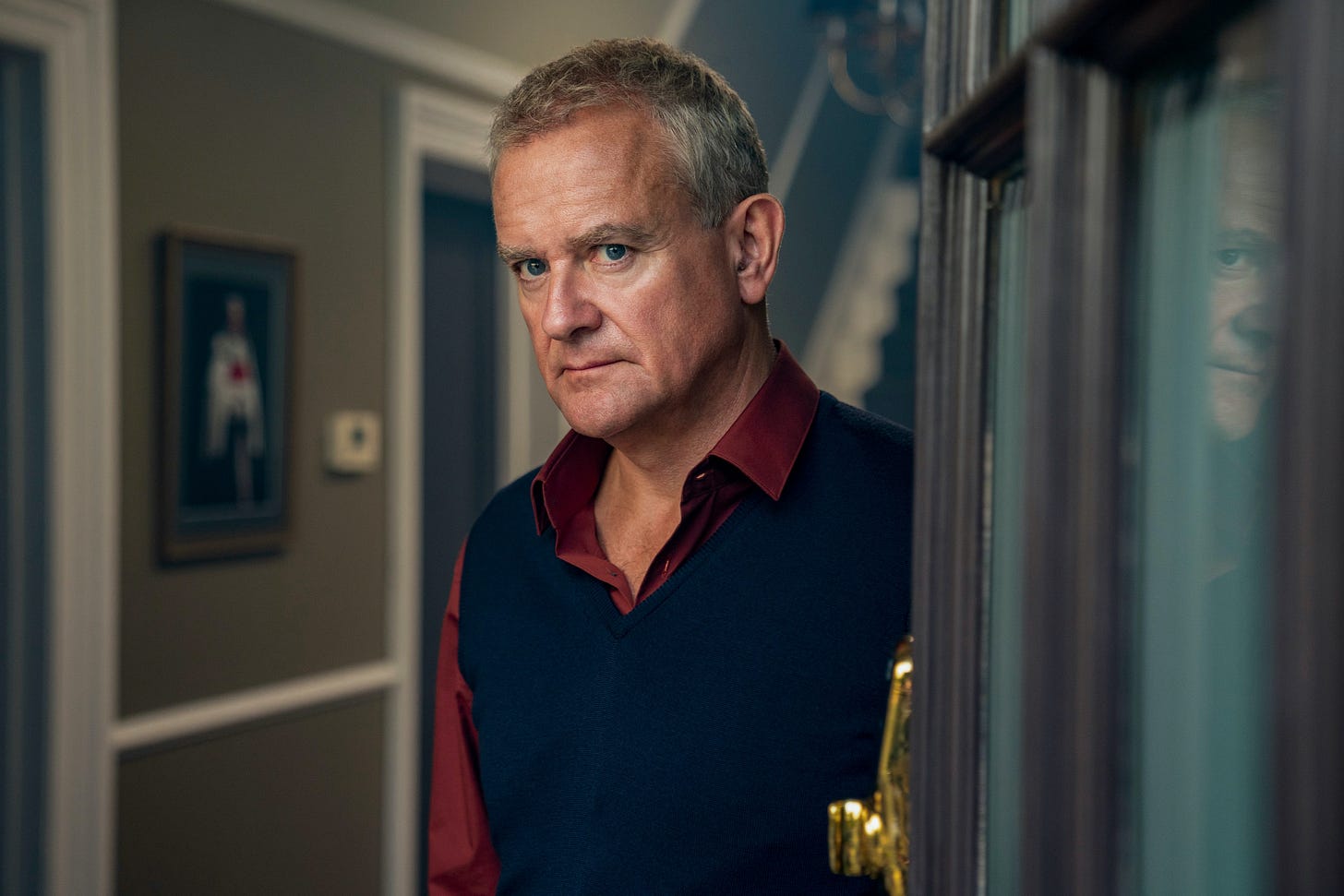Weekend Watch: The Lord Of The Rings: The Rings Of Power, I Came By
Earlier tales of Middle-earth and some bad judgements
Image Credit: Amazon Studios
Welcome to the latest edition of Weekend Watch, in which I recommend (or occasionally warn against) movies or TV shows I’ve been checking out. This week, a journey back to Tolkien territory and Hugh Bonneville breaks bad. Follow James on Twitter: @jamwhite
There are gambles in television and then there’s Amazon spending seventy gajillion dollars to buy the rights to material from The Lord Of The Rings author JRR Tolkien’s estate, to produce this massive new series for Prime Video.
Yet despite the incredible outlay to secure the rights, the company has pumped even more money to produce the series itself, and it is pleasing to report that it all ended up on the screen: The Rings Of Power is an impressive testament to finding good source material and then allowing creative people the resources to make the most of it.
Set in the Second Age of Middle-earth (by comparison, Peter Jackson’s two trilogies take in the Third Age, thousands of years later), the story of different characters banding together to battle a terrible evil feels like a familiar one, albeit brought to life with an even more expansive scope in terms of storytelling. There is a lot more you can say in a TV series than even one of the director’s lengthy extended editions of his films.
As the series kicks off, Middle-earth is in a period of relative calm following a terrible period of war against the dark forces of Morgoth and his main lieutenant, Sauron. While Morgoth is defeated and imprisoned, Sauron goes into hiding and looks to spread his influence in craftier, more subversive ways. The name of this series is not by accident.
The narrative here is spread among different races but focused on specific characters from within those groups – particularly Morfydd Clark, who plays a younger version of Galadriel, as seen on big screens played by Cate Blanchett. In the cinema, she is a powerful, mysterious sorceress who aids the Fellowship in their mission to destroy the One Ring, but in Rings Of Power, she’s a driven elven warrior, convinced that Sauron will return. Dismissed and ordered to let it go, Galadriel aims to build an alliance with others to prepare for his machinations.
Galadriel is our main character, but show-runners JD Payne and Patrick McKay, along with their writing team and a directing side led by JA Bayona find ways to make the representatives of the dwarfs, men and Harfoots (a breed of Hobbits) all stand out in their own ways.
The Harfoots – including Lenny Henry’s wise Sadoc Burrows are particularly entertaining, expanding on what we know of Hobbit culture. And if the stories set among men are not yet as enthralling, there are definite signs that they’ll grow into something.
The Rings Of Power faces two giant challenges but has advantages over both. Though it is a prequel to the better-known likes of the Jackson trilogies, and there is a risk that viewers won’t engage with the characters since several fates are already apparent, drawing from appendices and making key changes mean there is plenty of material to enjoy without knowing how it all works out.
Comparisons to the movies, meanwhile, are quickly brushed aside – as I mentioned in my intro, the budget for this show was gigantic and it shows. The location shooting (Season 1 was filmed in New Zealand, whereas the show has since relocated to the UK for the second), the healthy VFX fund and a pleasing amount of practical effects serve to make this of a piece with Peter Jackson’s work while still feeling like its own creation.
Of course, as the story expands beyond these initial episodes and we meet more characters that the show will have to juggle, it could all start to unravel. For now, though, it’s a show likely to please both fans of Tolkien’s work and those who only mostly know the movies.
The first two episodes of The Lord Of The Rings: The Rings Of Power are on Prime Video now. A new episode will debut weekly on Fridays. I’ve seen the first two of eight.
Image Credit: Netflix
If you’re used to seeing Hugh Bonneville in the cuddlier likes of the Paddington films and Downton Abbey, his role in the new Netflix thriller I Came By will be something of a shock.
Because the film, written by Babak Anvari and Namsi Khan and directed by Anvari plays on your expectations for a Bonneville character and his dark secrets are even more shocking.
He’s not the lead here, though – those duties are split between Kelly MacDonald, George MacKay and Percelle Ascott. The story follows anarchist graffiti artists Toby (MacKay) and Jay (Ascott), who regularly target the homes of the UK’s wealthy elite and ruling class. But when Toby breaks into the house of former High Court Judge Sir Hector Blake (Bonneville), he discovers… well, you’ll have to see the movie to learn that for yourself. MacDonald, meanwhile, plays Toby’s mother, who has her own quest.
It's a fairly run-of-the-mill thriller (a miller?), but it does have its pleasures. MacKay and particularly Ascott and Bonneville commit to their roles, and there are some twists, easily guessable though they may be.
Bonneville provides a hissable villain, his dodgy deeds concealed by a public sheen of crusading morality and backed up by powerful friends at the police.
MacKay and Prescott’s characters meanwhile, are more concerned with letting the rich and powerful know that the 99% are still watching, though you do have to wonder whether breaking into their houses and leaving graffiti scrawled across walls and windows is a way to get anyone on your side.
The film is by no means perfect – there are stretches where the tension drops entirely and at least a few times where you’ll cringe at the dialogue, and chances are it’ll flit from your brain minutes after you finish watching it.
Mostly though, I Came By makes me smile merely because of the level of Hard Stare that Paddington will give Mr. Brown over his behaviour here.
I Came By is on Netflix now.




